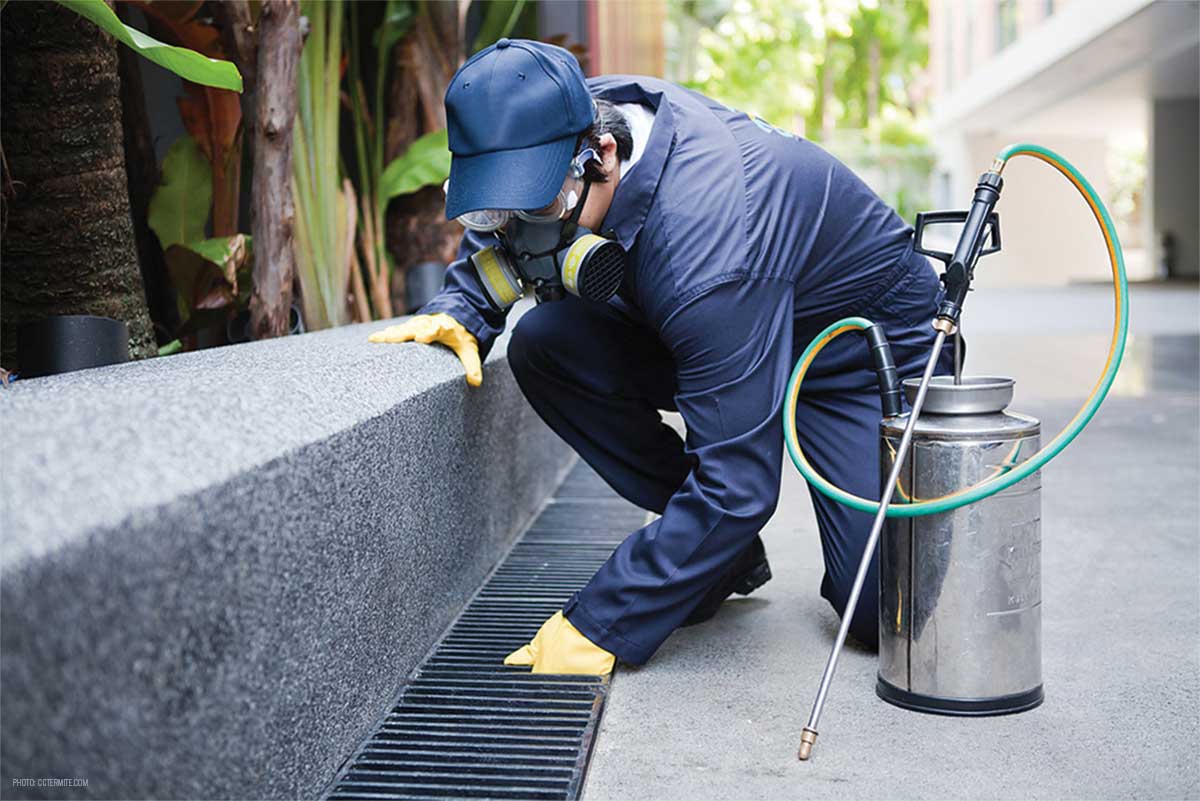Proven Bed Bug Heat Treatment: Get Rid Of Bed Bugs with Heat!
Proven Bed Bug Heat Treatment: Get Rid Of Bed Bugs with Heat!
Blog Article
Expert Parasite Control Techniques for Long-Term Results
Specialist pest control strategies encapsulate a comprehensive technique that starts with a complete inspection and assessment, adhered to by specific parasite identification to recognize their actions patterns. The implementation of Integrated Insect Monitoring (IPM) concepts, combined with eco-conscious therapies, forms the keystone of lasting parasite elimination.
Assessment and Analysis
Upon getting in a residential or commercial property for pest control services, the initial action is a comprehensive inspection and analysis to recognize the level of the invasion and establish the most efficient treatment plan. Specialist parasite control service technicians are trained to meticulously analyze the properties, trying to find signs of pest activity such as droppings, gnaw marks, nests, or any structural damages. They will certainly likewise evaluate the problems that might be bring in pests, such as food sources, water leaks, or entry factors.

Pest Recognition and Actions

Moreover, comprehending the actions of the determined bug is key to carrying out reliable control steps. Knowing where parasites nest, what they feed on, and their task patterns can aid pest control specialists develop strategies to remove them effectively. Some pests may be nighttime, while others are a lot more active throughout the day. This knowledge permits the application of therapies at optimal times for optimum performance.
Integrated Bug Monitoring (IPM)
Integrated Bug Administration (IPM) strategies combine several strategies to regulate and avoid pest invasions in a sustainable and ecologically friendly fashion. Pest control Washington DC. By incorporating techniques such as organic control, environment manipulation, modification of social techniques, and the use of immune selections, IPM aims to lessen making use of chemical pesticides
One of the essential principles of IPM is the focus on avoidance. This proactive approach includes surveillance parasite populaces on a regular basis to find any kind of possible concerns prior to they rise. By recognizing pest troubles at an early stage, pest control procedures can be applied promptly and effectively.
Moreover, IPM promotes using non-toxic insect control approaches whenever possible. This can consist of employing natural predators of the parasites, introducing helpful insects, or using scents to interfere with check out this site breeding patterns. By lowering dependence on chemical pesticides, IPM not only safeguards the setting however also helps preserve an equilibrium in the environment.
Environmentally-Friendly Therapies
Executing eco-conscious More Help methods in insect control treatments can efficiently address infestations while prioritizing ecological sustainability. Environmentally-friendly treatments concentrate on reducing the effect of pest best solution for termites control techniques on environments, non-target organisms, and human wellness. These methods often involve making use of natural predators, such as ladybugs or nematodes, to manage pest populations, minimizing the demand for chemical treatments. In addition, methods like habitat adjustment, such as readjusting moisture degrees or removing food resources, can help hinder pests without using damaging substances.
One more key facet of environmentally-friendly therapies is using organic and biodegradable items that break down quickly without leaving damaging deposits in the atmosphere. Herb pesticides stemmed from plants like chrysanthemums or neem offer effective parasite control while posturing minimal threat to non-target species. Furthermore, using techniques like warm treatments or scent catches can target details parasites with precision, reducing the general ecological effect of pest control methods.
Ongoing Monitoring and Maintenance
Consistent surveillance and maintenance are necessary components of efficient pest control monitoring. Ongoing tracking plays an important duty in making sure that pest infestations are spotted early and handled quickly. Regular evaluations by trained specialists are essential to recognize any kind of indicators of insect task, analyze the efficiency of previous therapies, and make adjustments to the pest control plan as needed. By monitoring bug populations gradually, insect control specialists can track fads, expect potential issues, and carry out preventive measures to lessen the threat of future problems.
Along with monitoring, maintenance techniques are crucial for lasting pest control success. This consists of carrying out proper hygiene actions to remove prospective food and water resources for insects, sealing access points to stop bugs from getting in the properties, and dealing with any type of architectural problems that might assist in bug problems (bed bug dog). By incorporating recurring monitoring and upkeep right into an integrated insect monitoring strategy, organizations can guarantee a pest-free setting and protect their residential property versus costly damage and health and wellness risks
Conclusion
To conclude, using professional parasite control strategies such as thorough assessment and analysis, accurate bug recognition and understanding of their behavior, integrated insect administration methods, environmentally-friendly therapies, and ongoing tracking and upkeep are important for attaining lasting cause parasite control. By implementing these techniques, people can effectively manage bug infestations and keep a pest-free environment in a lasting way.
Report this page